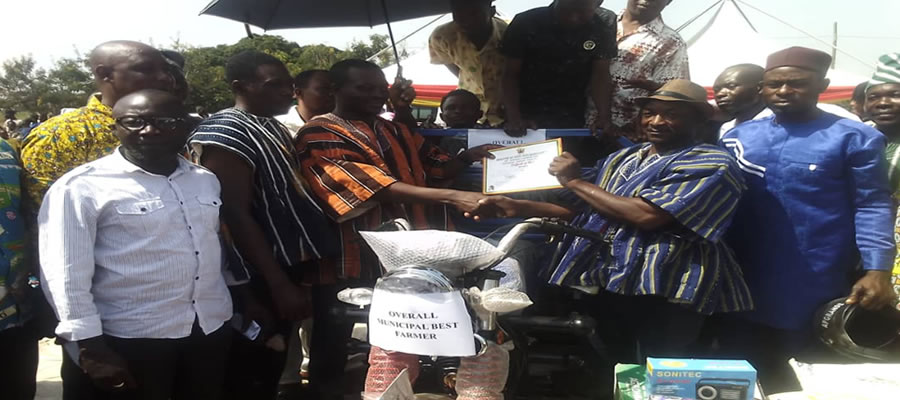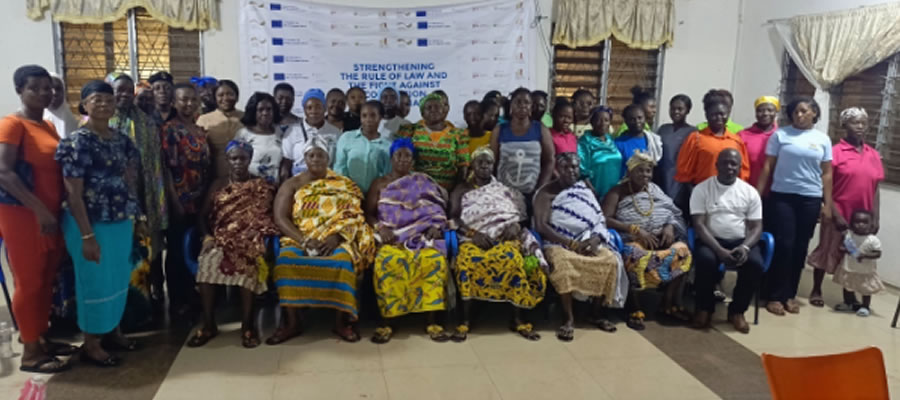

The Atebubu Amantin Municipal is one of the eleven MMDAs in the Bono East Region of Ghana. It is located between latitudes 7o23” N and 8o22” N and longitudes 0o 30’W and 1o 26’W.
Atebubu Amantin Municipal shares boundaries with the Pru West District to the north, the Sene West District to the west and Nkoranza North District to the east all in Bono East Region. To the south, it is bounded by three districts in the Ashanti Region namely Ejura Sekyedumase Municipal, Sekyere East District and Sekyere West District. The Municipal capital (Atebubu) is about 155km from Kumasi and 144 km from the regional capital, Techiman.
The Municipal has a surface area of about 2605 square kilometers.
The rocks underlying the municipal are part of the voltaian formation which covers about two-fifths of the surface area of Ghana. The rock belonging to formation are manly sedimentary and exhibits horizonal alignments. Examples include; sandstones, shale, mudstones and limestones.
In terms of relief, the municipal has a plain landscape with rolling and undulating land surface a general elevation of between 60-300 meters above sea level. It is not associated with any significant highlands. The area is mainly drained by the Pru River which is a right tributary to the Volta Lake. Other important streams include the Nyomo and the Bresuo Rivers. The sluggish flow of these rivers permits the depositing of alluvial soils of the river beds and along their banks. The fertile nature of the soils is a great potential for increased food production in the municipality. this the reason why the Municipality is noted as a food basket in the country.
The water table in the municipal is however very low resulting in the drying up of water bodies including wells, boreholes, streams most especially during the dry season. Water from the Pru river is currently being treated and supplied to the inhabitants of Atebubu Township and other surrounding communities.
On climate, the municipal experiences the tropical continental or the interior savanna type of climate; which is a modified form of the wet semi-equatorial type of climate. This due to location of the municipal in the transitional zone between the two major climates in Ghana. The total annual rainfall is between 800mm and 1300mm and occurs in two seasons. The first rainy season begins April or May whilst the second season begins at July or August. The difference between the minor and major season is hardly noticed because of the transitional nature of the area. The mean monthly temperature ranges from 30° C in March and to as low at 24° C in August. Mean annual temperature ranges between 26.5° C and 27.2° C. In extreme cases, temperature rise to about 40° C. The municipal comes under the influence of the Northeast Trade Winds (Harmattan) between November and February). The municipal climate is hardly stable therefore making it difficult to predict the rainfall pattern.
On vegetation, the Municipal falls within the interior wooded savanna or tree savanna. However, owing to its transitional nature, the area does not totally exhibit typical savanna conditions. The savanna is heavily wooded, though most of the trees are not as tall and gigantic as those in the moist deciduous forest. It is believed that the transitional zone was once forested and that the savanna conditions currently prevailing have been the result of human activities. This may be evidenced by the existence of “fringe forests” found along the banks of rivers and streams and other areas where the impact of human activities is minimal. Common trees species found outside the few dotted fringe forests include the baobab, the dawadawa, acacia and the Shea nut trees, which have adapted to this environment.
Soils in the Municipal belong to a group called “groundwater lateritic soils” which cover nearly three-fifths of the interior wooded savanna zone of Ghana. These soils are formed mainly over Voltaian, shales and granites. Most of the soils are fine-textured, ranging from fine sandy loams to clayey loams, and are mostly poorly drained. Crops that can potentially be supported by these soils include rice, vegetables, yams, cassava, maize, sorghum, groundnuts, soya beans, cowpeas and tobacco.
Map.1 A MAP OF ATEBUBU AMANTIN -MUNICIPAL
Implication for development
The physical characteristics of the Atebubu-Amantin Municipal contain a basket of potentials that can be tapped for the socio-economic development of the area. The Municipal serves as a transit point between the northern and southern sectors of the country. This positioning has the potential of increasing the marketing potential of the Municipal and opening it up for investment.
The vast nature of the Municipal (2605km2), with a population of 144,947 gives a low crude density of 49 persons per square kilometer. This implies that there could be abundant land for farming and other socio-economic activities. The comparatively easy process of acquiring agricultural land in the Municipal buttresses this fact.
The geology of the Municipal is a potential resource for development. As already mentioned, deposits of clay, sand, limestone and stone/gravel could be a stepping stone in the development of the entire municipality. For instance, the abundant clay deposits could be used for glazed pottery and manufacture of burnt bricks, floor and roofing tiles.
In terms of relief and drainage, the vast land is a potential for large scale mechanized farming. Road construction and other activities are also relatively less costly. The water resources such as the River Pru in the Municipal could also be harnessed for irrigation purposes, especially for rice cultivation and dry season gardening aside its current use for the supply of potable water for some communities in the municipal. The high intensity of the sun in the area provides abundant solar energy, which is already being used by farmers for preservation and storage purposes.
The municipal’s population derives a lot of benefits from the savanna woodlands, including housing, hunting and energy. However, these often lead to overexploitation of the vegetation, which consequently results in environmental degradation. The soils, vegetation and climate of the municipal constitute suitable ecological conditions for both arable farming and livestock rearing. However, the excessive rainfall experienced sometimes could cause flooding, also render feeder roads unmotorable.
Date Created : 3/27/2023 6:27:38 AM












 facebook
facebook
 twitter
twitter
 Youtube
Youtube
 +233 593 831 280
+233 593 831 280 0800 430 430
0800 430 430 GPS: GE-231-4383
GPS: GE-231-4383 info@ghanadistricts.com
info@ghanadistricts.com Box GP1044, Accra, Ghana
Box GP1044, Accra, Ghana